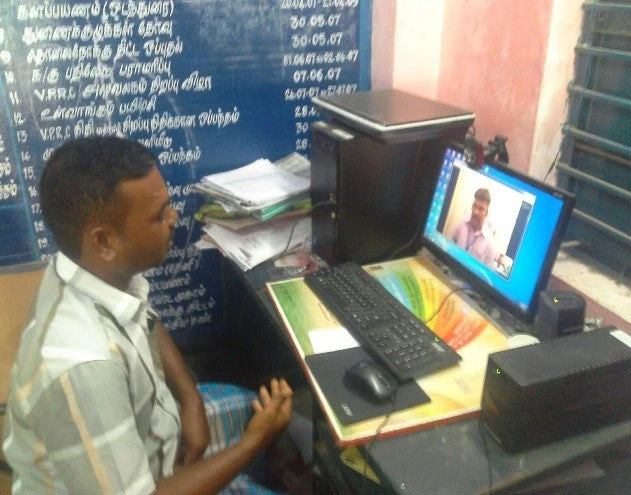 After an accident at his workplace, Bhoomi, a 26-year-old from rural Tamil Nadu, India, lost interest in work and isolated himself from everyone. His neighbors were at a loss to understand the change in his behavior. He was labeled a “lunatic,” which worried his parents and propelled them to seek help.
After an accident at his workplace, Bhoomi, a 26-year-old from rural Tamil Nadu, India, lost interest in work and isolated himself from everyone. His neighbors were at a loss to understand the change in his behavior. He was labeled a “lunatic,” which worried his parents and propelled them to seek help.
Mental illness or disability can be a debilitating experience for an individual as well as his or her family . People not only have to deal with the physical and biological impacts of an illness, but also with the social and cultural stigma that accompanies it.
This was what Bhoomi and his family went through before they benefited from the Tamil Nadu government’s Mental Health Program (TNMHP).
This community-based intervention, supported by the World Bank with Japanese Policy and Human Resources Development (PHRD) funds from 2012 to 2016, has used technology for not only disseminating information and raising awareness about mental illness and retardation, but also for expanding mental health care through tele-medicine and Skype.
At first, TNMHP saw limited turnout from young people at medical camps. Then, in consultation with leading practitioners in Tamil Nadu, the project used technology to reach out to those who were reluctant but in need of care. Initial efforts showed that youth were comfortable seeking help through Skype.
Today, the advent of cyber cafes, internet facilities and mobile phones has made tele-medicine and skype less intimidating, and the use of technology is growing increasingly popular in mental health programs . A recent evaluation of the program shows that a stunning proportion of youth between 15-24 years of age (80%–100%), including girls, use skype or tele-medicine to seek help.
For women, however, this remains unfamiliar and daunting. The assessment found that only a small percentage of older women (6%) resorted to tele-medicine or Skype for treatment of mental illness or retardation, while a slightly higher percentage (10%) of men did so.
Still, technology can enable women to discuss highly stigmatized health concerns, including those related to mental health issues , with confidentiality and reassurance.

Skype and tele-medicine can also help overcome issues of physical access to services, especially in the health sector . Moreover, it can save on costs as a limited number of psychiatrists can cater to a larger number of people, in addition to reducing the social and cultural stigma.
Take the case of Radhika. Radhika lives with her parents in a remote village in Tamil Nadu. Not only did medicine prove to be too expensive for the daily wage agriculture labourers, but caregiving was time consuming. Radhika’s mother stopped going to work to take care of her, dealing a severe blow to the family’s income. Being able to seek expert help through Skype, and thus access high-quality mental health services helped Radhika recover and enabled her mother to go back to work.
Tele-medicine under TNMHP has become possible due to doctors and nurses volunteering their time and expertise for addressing the physically, socially, culturally and attitudinally remote populations with much-needed support. Now, some creative thinking is required to tailor methods for different demographics and, for this, technology can be a major ally!
Related:
- Topic brief: Mental Health
- More blog posts on mental health
- Subscribe to our Sustainable Communities newsletter
- Follow us on Twitter (@WBG_Cities) and Flipboard




Join the Conversation